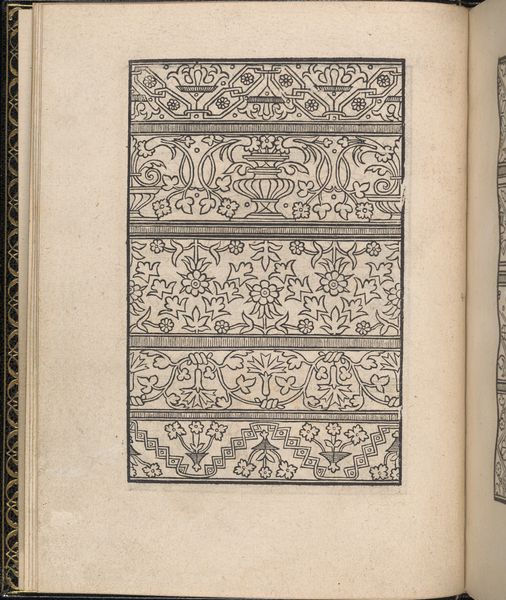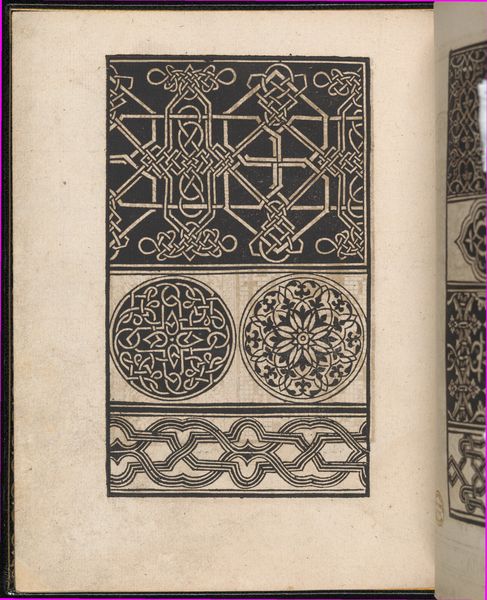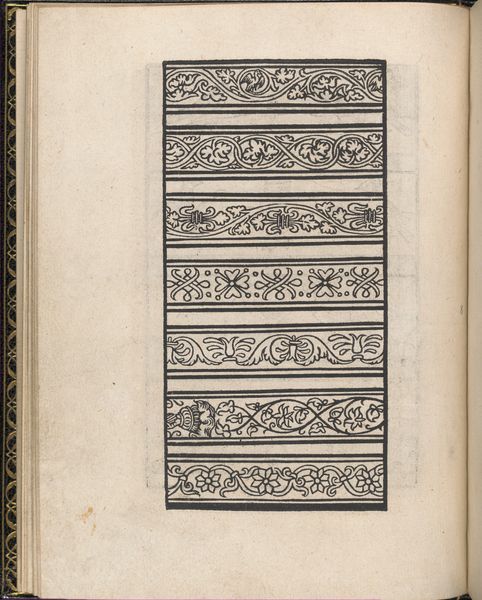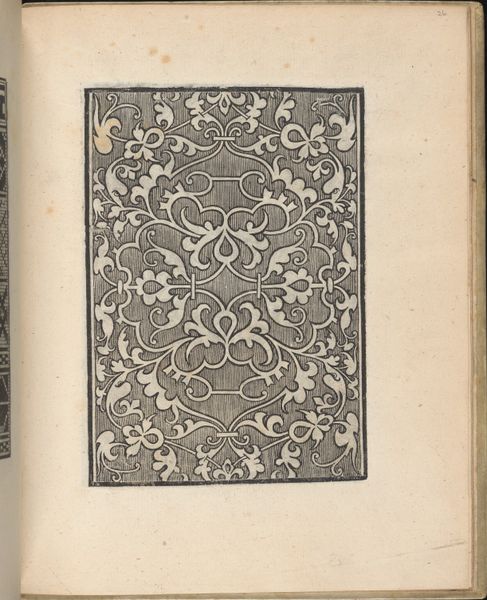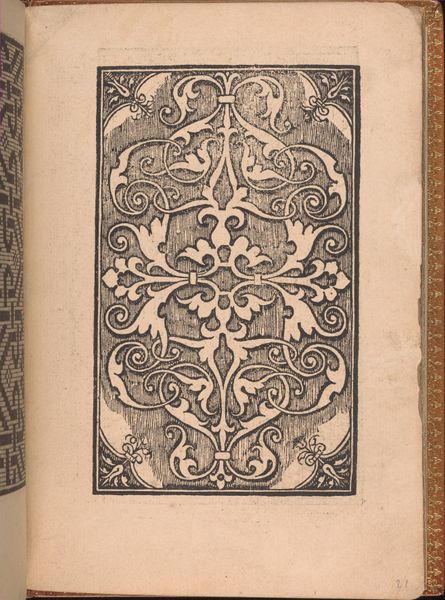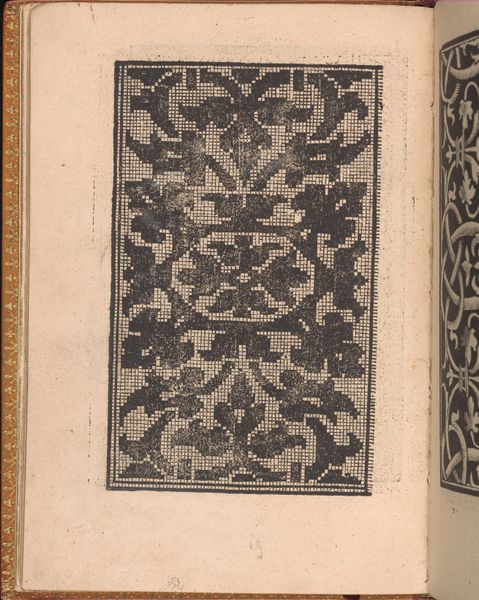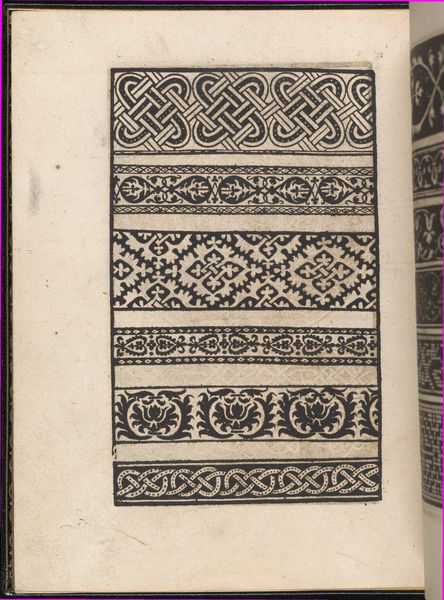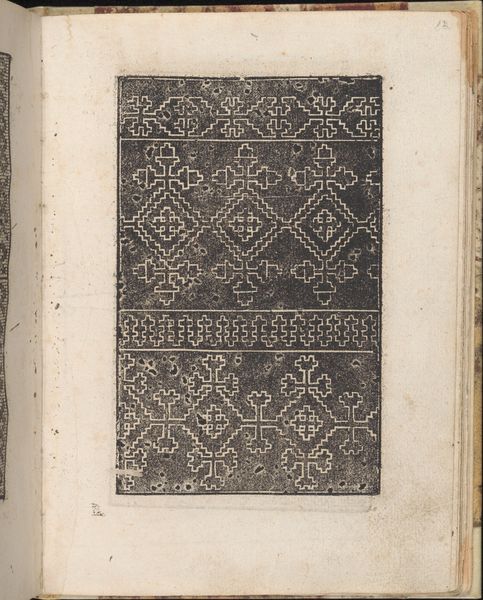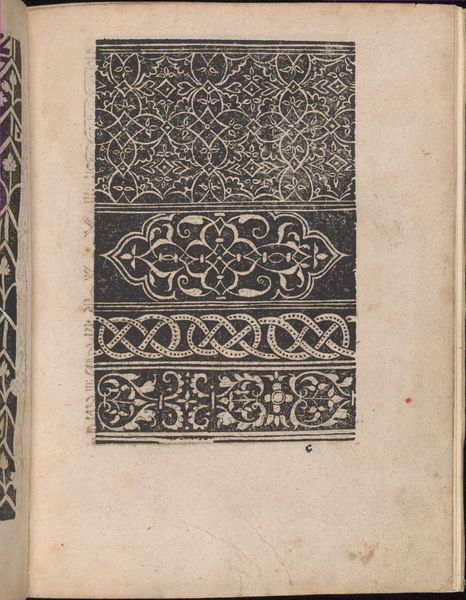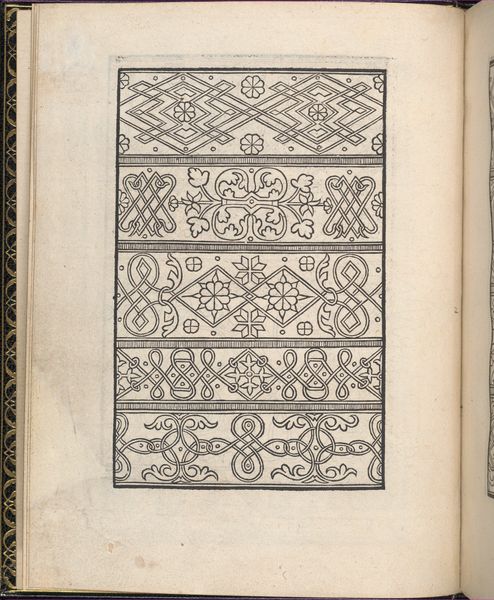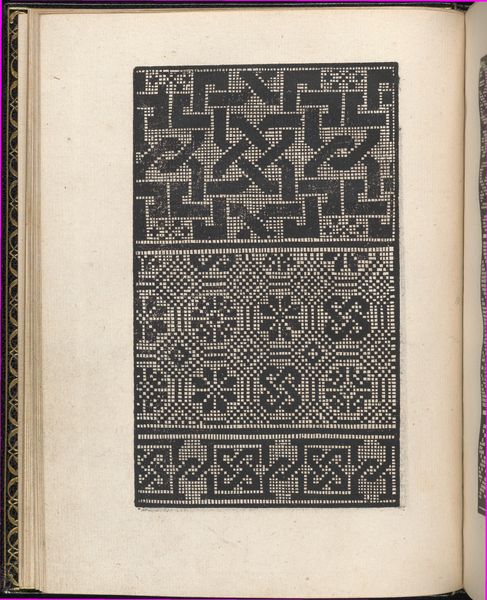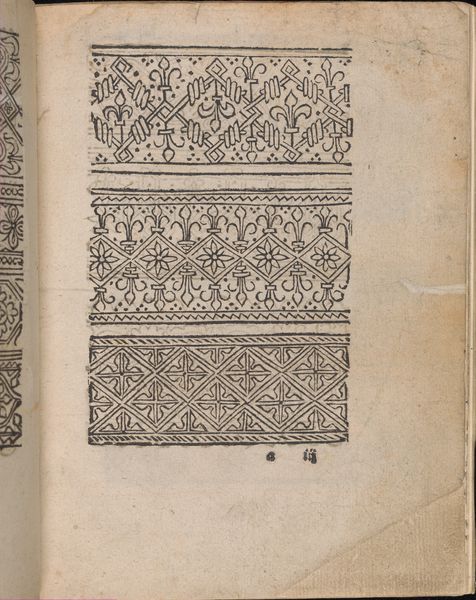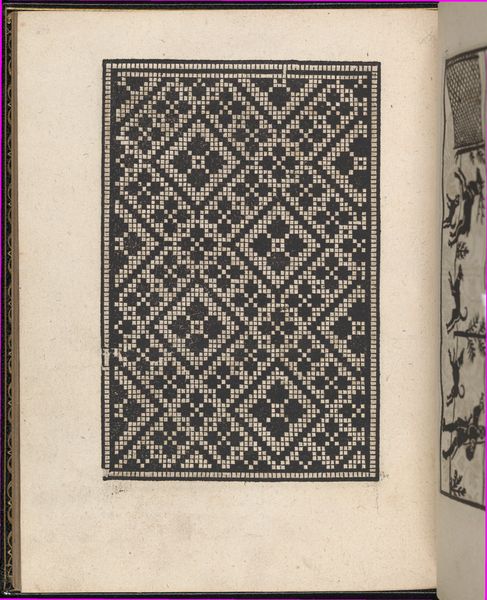
Page from Ein new kunstlich Modelbuch...(Page 49v) 1544
0:00
0:00
drawing, graphic-art, print, textile, typography, woodblock-print, woodcut
#
drawing
#
graphic-art
# print
#
pattern
#
textile
#
11_renaissance
#
typography
#
woodblock-print
#
fabric design
#
woodcut
#
pattern repetition
#
northern-renaissance
#
textile design
#
decorative-art
Dimensions: Overall: 7 11/16 x 5 7/8 in. (19.5 x 15 cm)
Copyright: Public Domain
Editor: This is a page from "Ein new kunstlich Modelbuch…(Page 49v)" created in 1544 by Peter Quentel. It seems to be a woodcut print, and what strikes me is the incredible detail achieved through this process, intended as a pattern book. How can we read the significance of these designs in their historical context? Curator: For me, understanding this print requires considering its production and consumption. It's not simply an aesthetic object, but evidence of material processes. We need to look at the economic and social conditions of 16th century printing and textile production to really appreciate this work. These pattern books democratized design, making it accessible beyond elite circles. Consider the labor involved, from the woodcutter to the lacemaker who might use this for inspiration. Editor: That’s a fascinating point! I was initially drawn to the aesthetic value, but now I’m considering the material conditions of its creation, and its use-value in empowering different laborers of the time. Does the choice of a woodcut influence your understanding? Curator: Absolutely. Woodcut is a relatively accessible printmaking technique. It suggests a wider dissemination, perhaps targeting a less affluent audience than, say, engravings would reach. It speaks to the broader economic and social shifts during the Renaissance, where print culture was becoming increasingly integrated into daily life and manufacturing processes. Do you think we can look at it as an instruction manual? Editor: I think so! Initially, I perceived this piece as belonging to the decorative arts. Considering its usage as a functional instructional document certainly enriches my understanding and emphasizes the fusion of utility and design. Thank you. Curator: And thinking about its function helps us move beyond just admiring the aesthetics, to appreciating the complex material and social networks involved in its creation and use. It is after all a pattern to use as resource and as guide for production of other art crafts. I found the economic perspective it offers as really enriching, what about you?
Comments
No comments
Be the first to comment and join the conversation on the ultimate creative platform.
